Space
“Hubble Space Telescope” and its achievements in astronomy
Published
2 months agoon
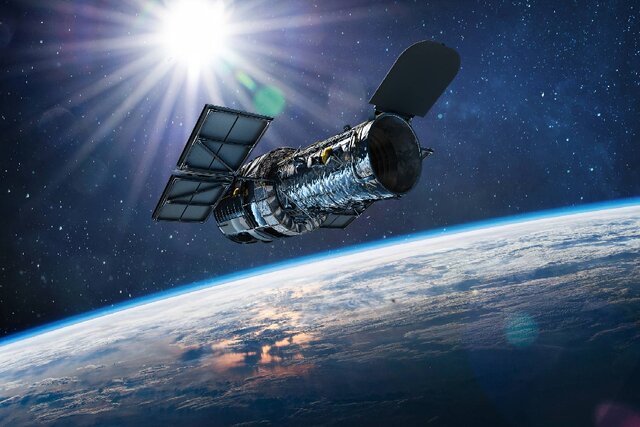

The Hubble Space Telescope, which orbits the Earth, has changed the way astronomers and the general public look at the world. Hubble has exceeded expectations by recording more than 1.4 million observations and providing data for more than 16,000 scientific papers.
“Hubble Space Telescope” and its achievements in astronomy
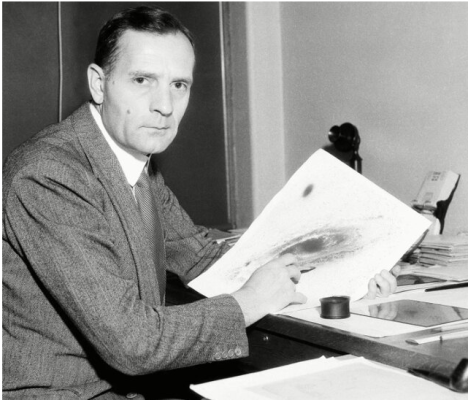

Famous Hubble photos
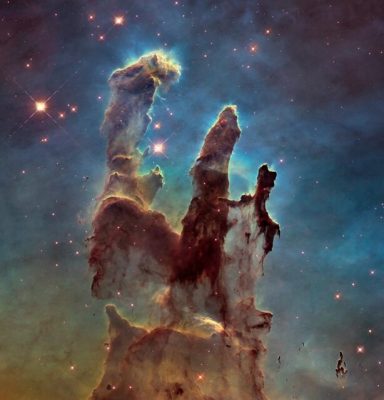

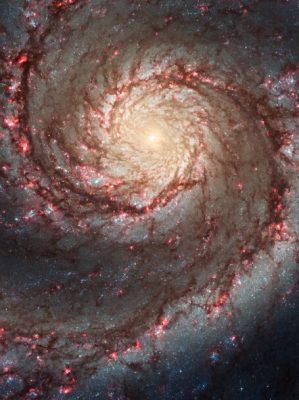

“Hubble Space Telescope” and its achievements in astronomy
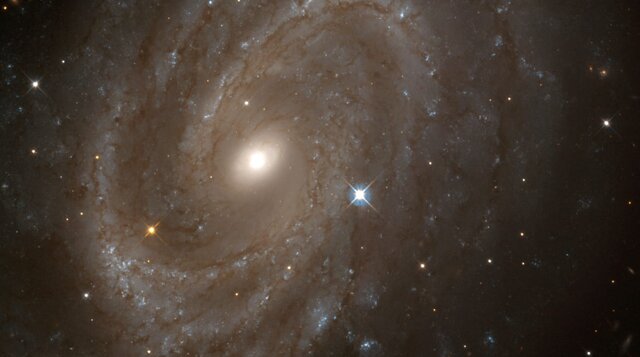

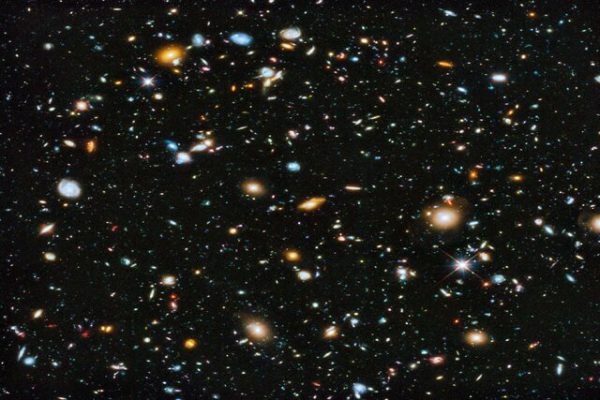

The result of this work was wonderful. So, the astronomers did it again and took pictures of the Hubble Ultra Deep Field and the Hubble Extreme Deep Field. They did it each time using longer exposures and improved equipment.
6. “NGC 6302” or “Butterfly Nebula” is one of the nebulae photographed by Hubble. With a surface temperature estimated at around 250,000 degrees Celsius, the dying central star of the nebula is extremely hot and glows in ultraviolet light, but is obscured from direct view by a dense mass of dust. A close-up and colorful view of the Butterfly Nebula was captured in 2009 by the Hubble Space Telescope’s Wide Field Camera 3. The dust cloud surrounding the central star lies within a bright hole of ionized gas near the center of the view. Molecular hydrogen has been detected in the dusty cosmic mantle of a hot star.
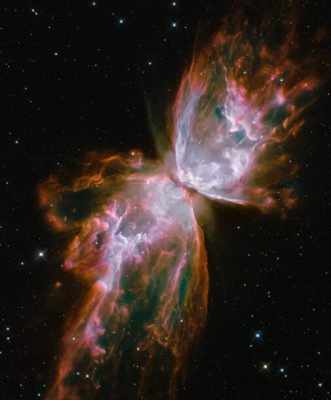

The Butterfly Nebula is located at a distance of 4000 light years from Earth in the constellation of “Scorpius”. The butterfly nebula shows what happens at the end of a star’s life after its gas and dust run out. This is not only a reminder of the ultimate fate of our own Sun and Solar System but also sheds light on Hubble’s unique ability to observe this event over the long life cycle of a star and study how stars evolve.
7. The galaxy “UGC 10214” or “Tadpole Galaxy” is only 420 million light years away from the face of “Draco”. The frog’s tail is about 280,000 light-years long and shows large and bright star clusters in blue. In a stunning image captured by the Hubble Space Telescope’s Advanced Camera, distant galaxies form a backdrop to the Spiral Galaxy Frog. The Toadstool galaxy is disrupted by collisions and shows bursts of star formation in its tail, but behind it are thousands of other galaxies. This picture shows the power of Hubble.
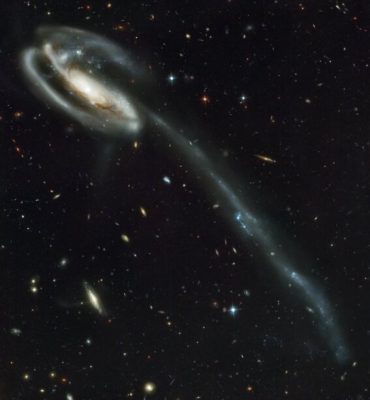

8. The star cluster “NGC 602” (NGC 602) is located near the outskirts of the Small Magellanic Cloud, at a distance of about 200 thousand light years from Earth. Surrounded by natural gas and dust, NGC 602 shows itself in this Hubble image. In star clusters like NGC 602, you can see the star-birth region. The extraordinary bulges and wavy shapes show that energetic radiation and shock waves from the massive young star NGC 602 have eroded the dusty material away from the center of the star cluster. A surprising array of background galaxies are also visible in the Hubble image. The background galaxies are hundreds of million light-years or more away from NGC 602.
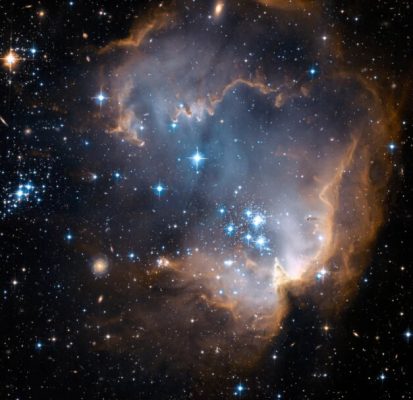

Using Hubble observations, it was confirmed that the stars of NGC 602 were not born suddenly, but formed at different times. Hubble also determined that star formation may have begun there as early as 60 million years ago.
9. Galaxy “NGC 1300” (NGC 1300). One of the largest Hubble Space Telescope images of an entire galaxy is NGC 1300. This galaxy is an amazing example of a barred spiral galaxy. Unlike other spiral galaxies, whose stellar arms extend outward from the center, NGC 1300’s arms radiate away from the end of a straight band of stars that extends across the galactic core.
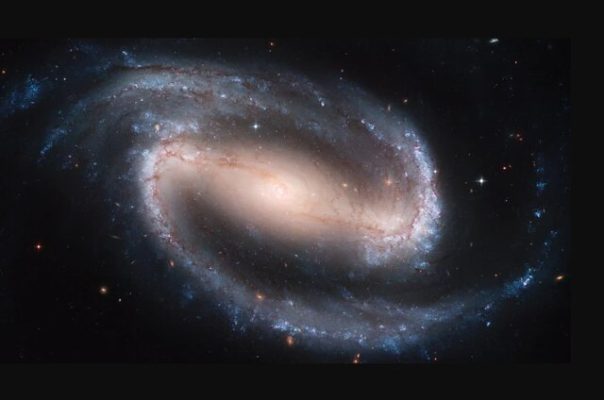

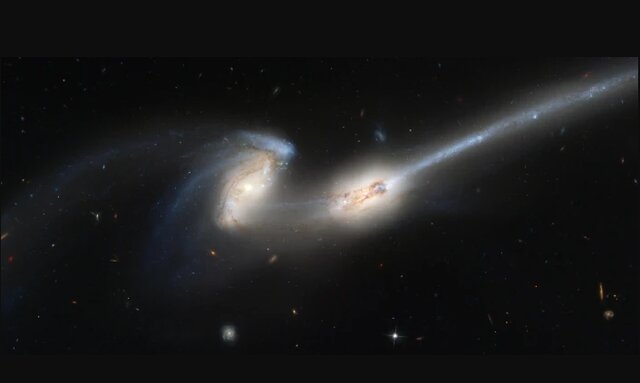



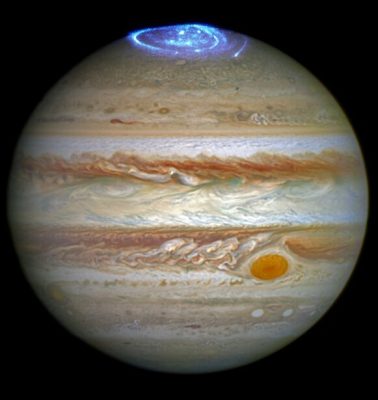

Future plans


You may like
-

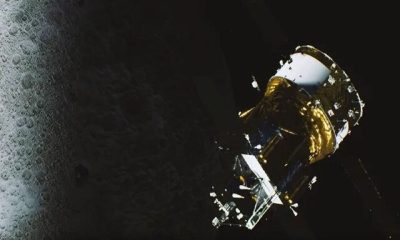


A mystery that is solved by the China’s Chang’e-6 probe!
-




Discover a new answer to the ancient mystery of a Venus!
-

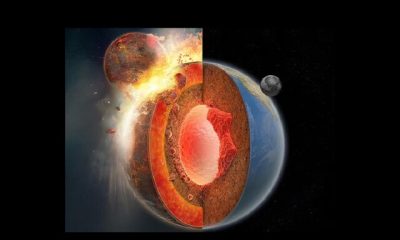


Discovering new evidence of the impact that formed the Earth’s moon
-

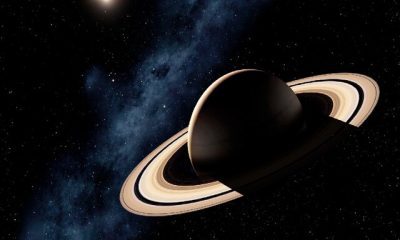


Maybe alien life is hidden in the rings of Saturn or Jupiter
-

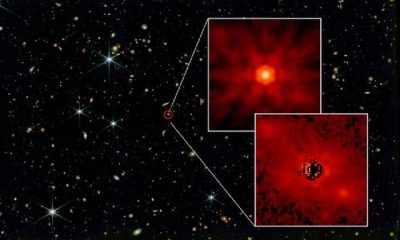


Discovering new clues about the formation of the world’s first black holes
-




NASA is going to space exploration with a 36-pixel camera
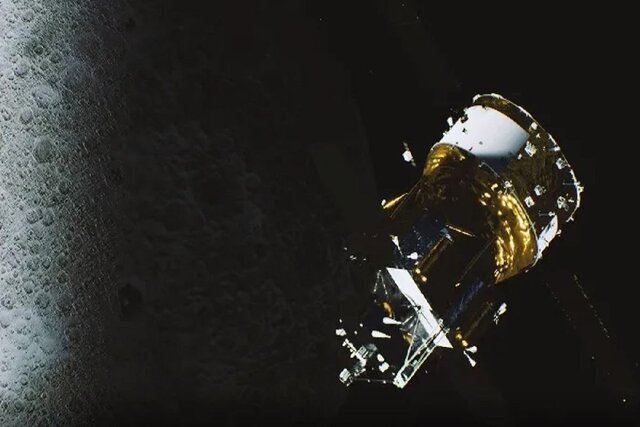

China’s Chang’e-6 probe, launched to retrieve samples from the far side of the moon, has a big mystery to solve about Earth’s moon.
A mystery that is solved by the China’s Chang’e-6 probe!
China’s Chang’e-6 mission, which is currently on its way to bring back samples from the far side of the moon, will help investigate theories about why the far and near sides of the moon differ.
According to Space, Changi 6 is expected to land in early June in the Apollo impact basin, which is located within the larger South Pole–Aitken basin.
The Aitken Antarctic Basin is the largest collisional feature of its kind in the solar system, with an area of 2,400 x 2,050 km. This basin was formed about 4.3 billion years ago, which is very early in the history of the solar system.
Although the Apollo Basin is younger, it is the largest impact site within the Aitken Antarctic Basin. Apollo has a two-ring structure, the inner ring consists of mountain peaks with a diameter of 247 km, and the outer ring is about 492 km wide.
The Chang’e-6 mission was launched on May 3 from the Wenchang Satellite Launch Center in Hainan Province, located in southern China, and went to the moon on a Long March 5 rocket.
As the first mission to bring samples from the far side of the moon, Changi 6 is supposed to bring back about two kilograms of precious lunar material. The far side of the moon is a relatively unknown place. The fact that we can’t see the far side of the moon from Earth adds to its mystery. For the first time, the Soviet Union’s “Luna 3” spacecraft photographed the far side of the moon in 1959.
With that photo, scientists around the world were amazed to see how different the far side of the moon is from the side we are familiar with. Although both the far and near sides have many craters, the near side also contains vast volcanic plains called “lunar maria” that cover about 31% of it.
The far side of the moon is opposite and volcanic plains cover only about 1% of it.
So how did the far side and the near side become so different? It seems that the thickness of the shell is one of the factors. In fact, NASA’s GRAIL mission found in 2011 that the far-side crust is on average 20 kilometers thicker than the near-side crust.
The reason for this is thought to be that our moon was formed from debris from the impact of a Mars-sized planet on Earth about 4.5 billion years ago. As the Moon formed from that debris, it became tidally locked. This means that it always shows the face of our planet.
The surface of the earth was completely melted by that big impact and it radiated heat towards the near side of the moon and kept itself molten for a longer time. Scientists believe that the rock vaporizes on the near side and condenses on the colder side, thickening the crust on the far side.
Hong Kong University (HKU) researcher Yuqi Qian is one of the lead researchers on a new project that shows that a sample to be returned to Earth by Chang’e 6 could test this theory. Keyan said: Basic findings show that the difference in crustal thickness between the near and far sides may be the main cause of the difference in the moon’s volcanism.
In places like most distant parts where the Moon’s crust is thick, magma can’t seep through fractures to the surface. In areas such as the near side where the crust is thin, fractures can allow magma to seep in and lead to lava eruptions.
The Aitken and Apollo Antarctic Basins, despite both being on the far side of the Moon, create contradictions. That’s because they’ve gouged deeply into the Moon’s crust, and at the base of these giant impact sites, the crust is thinner than elsewhere on the far side. Volcanic plains also exist within these basins, but only five percent of their area is covered by basalt lava. This limited amount of volcanism seems to contradict the conventional idea that crustal thickness dictates volcanic activity. This creates a paradox in lunar science that has been known for a long time.
An alternative possibility suggests that the near side could contain more radioactive elements than the far side. These elements may have generated heat and led to the melting of the lower mantle. As a result, much more magma has formed and a thinner crust has formed on the near side. Hence, the volcano is more in this area.
However, by landing on one of the few volcanic plains on the far side, Chang’e 6 could provide samples to directly test such theories. In particular, the Apollo Basin area where Chang’e 6 will land contains a variety of materials that require investigation.
Some evidence shows that there were two major volcanic eruptions in this area. Scientists believe that one of them covered the entire region in magma containing a small amount of titanium around 3.35 billion years ago. The other, which probably occurred 3.07 billion years ago, probably contained titanium-rich magma and erupted near the Chaffee S crater. Thus, the thickness is reduced.
Read more: Discovering new evidence of the impact that formed the Earth’s moon
New research shows that bringing samples from near the Chafi S crater will bring the most scientific benefits. This area has titanium-rich basalt in the upper part, titanium-free basalt in the lower part, and various pieces of projectile material from the impact.
“Joseph Michalski” (Joseph Michalski), a researcher at the University of Hong Kong and one of the researchers of this project said: “Diverse sample sources provide important information to answer a set of scientific questions about the Moon and the Apollo Basin.”
These diverse samples can also provide scientists with information about magmatic processes occurring on the far side of the moon. By comparing them with nearby samples brought back to Earth by the Apollo missions, scientists may be able to answer the question of why the number of volcanoes on the far side of the Moon is so limited.
This research was published in the journal “Earth and Planetary Science Letters”.
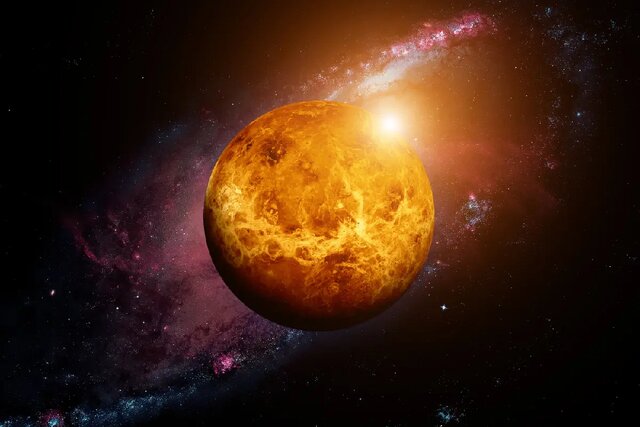

New research from the University of Colorado Boulder shows that Venus is losing water faster than previously thought, which could provide information about the planet’s early habitability.
Discover a new answer to the ancient mystery of Venus!
Today, the atmosphere of Venus is as hot as an oven and drier than the driest desert on Earth, but our neighboring planet was not always like this.
According to Converse, billions of years ago, Venus had as much water as Earth today. If that water was once liquid, then Venus was probably once habitable.
Over time, almost all of Venus’s water reserves have been lost. Understanding how, when, and why Venus lost its water reserves will help planetary scientists understand what makes a planet habitable, or what can turn a habitable planet into an uninhabitable one.
Scientists have theories to explain why most of the water supplies have disappeared, but the amount of water that has disappeared is actually greater than predicted.
Research conducted at the University of Colorado Boulder (CU Boulder) reports the discovery of a new water removal process that has been overlooked in recent decades but could explain the mystery of water loss.
Energy balance and premature water loss
The solar system has a habitable zone. This region is a narrow ring around the Sun where planets can have liquid water on their surface. Earth is in the middle of the habitable zone, Mars is outside on the very cold side, and Venus is outside on the very hot side. The place of a planet in this habitable spectrum depends on the amount of energy received by the planet from the sun and also the amount of energy emitted by the planet.
The theory of how Venus loses water reserves is related to this energy balance. Sunlight on early Venus decomposed the water in its atmosphere into hydrogen and oxygen. Hydrogen warms a planet’s atmosphere, acting like having too many blankets on the bed in the summer.
When the planet gets too hot, it throws the blanket away. Hydrogen escapes into space in a process called “hydrodynamic escape”. This process removed one of the key elements, water, from Venus. It is not known exactly when this process occurred, but it was probably around the first billion years of Venus’ life.
Hydrodynamic volatilization stopped after most of the hydrogen was removed, but some hydrogen remained. This process is like pouring out the water in the bottle, after which there are still a few drops left in the bottle. The remaining droplets cannot escape in the same way, but there must be another process on Venus that continues to remove the hydrogen.
Small reactions and big differences
This new research suggests that a neglected chemical reaction in Venus’s atmosphere could produce enough volatile hydrogen to close the gap between the missing water supply and the observed water supply.
The way this chemical reaction works is in the research of the University of Colorado Boulder. In the atmosphere, HCO ⁺ gas molecules, which are composed of hydrogen, carbon, and oxygen atoms and have a positive charge, combine with negatively charged electrons.
When ⁺ HCO and electrons react, ⁺ HCO breaks down into a neutral carbon monoxide molecule, CO, and a hydrogen atom. This process gives the hydrogen atom the energy it needs to exceed the planet’s speed and escape into space. The whole reaction is called HCO ⁺ dissociative recombination, but the researchers abbreviated it as DR.
Water is the main source of hydrogen on Venus. Thus, the DR reaction dries out the planet. The DR reaction probably happened throughout the history of Venus, and this research shows that it probably continues to this day. This reaction doubles the rate of hydrogen escape previously calculated by planetary scientists, changing their understanding of current hydrogen escape on Venus.
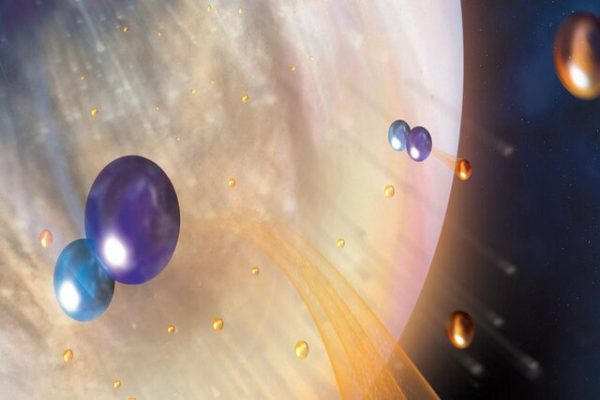

Understanding the conditions of the planet Venus with data and computer models
Researchers in this project used computer modeling and data analysis to study DR in Venus.
Modeling actually began as Project Mars. Mars also had water before – though less than Venus – and lost most of it.
To understand the escape of hydrogen from Mars, the researchers created a computational model of the Martian atmosphere that simulated the chemistry of the Martian atmosphere. Despite being very different planets, Mars and Venus have similar atmospheres. Therefore, the researchers were able to use this model for Venus as well.
They found that the DR reaction produced large amounts of fugitive hydrogen in the atmospheres of both planets. This result is consistent with observations made by the Mars Atmospheric and Volatile Evolution Mission (MAVEN) orbiting Mars.
Collecting data in the Venus atmosphere would be valuable to support the computer model, but previous missions to Venus have not measured ⁺ HCO; Not because it doesn’t exist, but because they weren’t designed to detect it. However, they investigated the reactants that produce HCO ⁺ in Venus’s atmosphere.
By analyzing observations made by the Pioneer probe and using their knowledge of the planet’s chemistry, the researchers showed that ⁺ HCO is likely present in the atmosphere in similar amounts to the computer model.
Searching for water
This research has solved part of the puzzle of how planetary water reserves are lost, which affects how habitable a planet is. We have learned that water loss occurs not only in one moment but over time and through a combination of methods.
Read more: Maybe alien life is hidden in the rings of Saturn or Jupiter
The faster loss of hydrogen through the DR reaction means that it takes less time overall to remove the remaining water on Venus. Also, this means that if oceans existed on early Venus, they could have existed for much longer than scientists thought. This allows more time for potential life to develop. The research results do not mean that oceans or life definitely existed. Answering this question requires more science.
The need for new missions and observations of Venus is felt. Future missions to Venus will provide some atmospheric surveys but will not focus on its atmosphere. A future mission to Venus, similar to the Moon’s mission to Mars, could greatly expand our knowledge of how the atmospheres of terrestrial planets form and evolve over time.
With technological advances in recent decades and renewed interest in Venus blossoming, now is a great time to turn our gaze to Earth’s sister planet.
Space
Discovering new evidence of the impact that formed the Earth’s moon
Published
4 days agoon
09/05/2024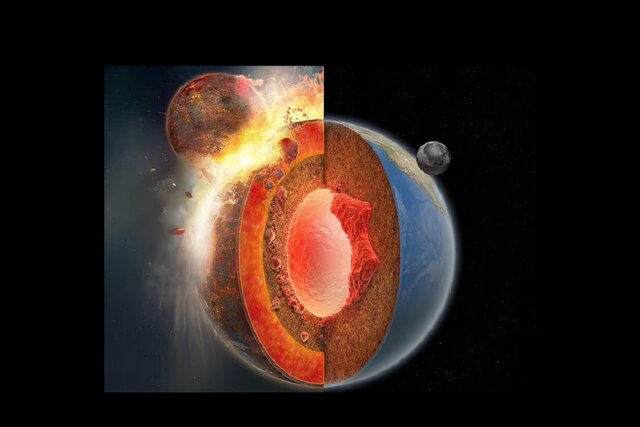

Discovering new evidence of the impact that formed the Earth’s moon. Data from NASA’s GRAIL spacecraft have found large deposits of iron-titanium ore deep on the moon’s surface, suggesting the remnants of Earth’s moon Thea.
Discovering new evidence of the impact that formed the Earth’s moon
A study on a metallic mineral from deep within the moon has provided new evidence that the natural moon of Earth was formed long ago by the impact of an ancient planet.
According to the Daily Mail, this long-theorized interplanetary collision, which scientists believe occurred about 4.5 billion years ago, describes a Mars-sized planet called Theia that, after colliding with Earth, It turned into pieces of hot lava.
Although some of the remnants of Theia appear to have been buried in large, dense blobs deep in the African and Pacific tectonic plates, evidence remains unclear as to where the rest of Theia went after the crash, scientists said.
Now, new data from NASA’s GRAIL spacecraft have found large deposits of iron-titanium ore deep within the moon’s surface, suggesting that other remnants of Theia actually formed Earth’s moon.
Adrien Broquet, a planetary geophysicist at the German Aerospace Center (DLR), described the GRAIL findings as fascinating.
A new paper by Brockett’s group focuses on gravitational anomalies deep within the Moon’s surface. These anomalies are dense, heavy pockets of matter detected by the GRAIL spacecraft’s sensors. “Analyzing these changes in the moon’s gravitational field allowed us to probe beneath the moon’s surface and see what lies beneath,” Brockett said.
The GRAIL spacecraft detected two dense regions beneath the Moon’s crust in the region between the crust and the core, called the mantle, which correspond to deposits of titanium-iron ilmenite. If the Tia collision theory is correct, we can say that these reserves exist.
After Thea likely collided with Earth, and after pieces of the missing planet were buried deep in the Earth’s crust, pools of molten lava rich in titanium and heavy iron on the moon’s surface sank toward its core, pushing lighter rocks upward. Jeff Andrews-Hanna, a geophysicist at the Lunar and Planetary Laboratory at the University of Arizona (UArizona), said: Our moon literally turned upside down.


Computer models presented by Peking University (PKU) researcher Nan Zhang provided the main framework for the theory that titanium-rich material exists deep within the moon, and as a result, it can be said that the origin of the moon is fragments of The planet Tia.
“When we saw the model’s predictions, it was as if everything became clear to us,” Andrews-Hannah said. When we look at the subtle changes in the Moon’s gravitational field, we see the exact same pattern, which hides a network of dense material beneath the crust.
Earth-based research has identified two dense, unusual regions in our planet’s mantle, called LLVPs, which have given credence to the theory that an interplanetary collision created our moon Theia. One of the two LLVPs lies beneath the African tectonic plate and the other beneath the Pacific tectonic plate, which is monitored by seismic equipment similar to that used to detect earthquakes.
Their existence was discovered when geologists found that seismic waves are dramatically reduced at a depth of 2,900 kilometers in the two regions and are different from the rest of the Earth. Scientists believe that the material in these two LLVPs is between 2 and 3.5 percent denser than the mantle around Earth.
Last year, a group of researchers led by the California Institute of Technology (Caltech) came up with the idea that two LLVPs could have evolved from a small amount of Thia material that entered the lower mantle of the ancient Earth.
Read more: Why there is no gaseous moon in solar system?
To confirm this, they enlisted the help of Shanghai Astronomical Observatory (SHAO) researcher Professor Hongping Deng to investigate this idea using his pioneering methods in fluid dynamics.
After running a series of simulations, Deng found that following the impact, a significant amount of their material—about two percent of Earth’s mass—was injected into the lower mantle of the ancient planet Earth.
“Qian Yuan”, a geophysicist at the California Institute of Technology and one of the researchers of this project, said: “With a detailed analysis of a wider range of rock samples, along with collision models and models of the Earth’s evolution, we can infer the material composition and orbital dynamics of the early Earth.”
Their research was published in Nature magazine last year.


Skin cancer: symptoms, prevention and treatment


The strange ways skin affects our health


A mystery that is solved by the China’s Chang’e-6 probe!


Artificial intelligence identifies cancer killer cells


Discovery of new hydrothermal wells at a depth of 2.5 km in the ocean


The secret of the cleanest air on earth has been discovered


Xiaomi Pad 6S Pro review


The biography of Pavel Durov


Why do people listen to sad songs?


Inventing a new drug to treat influenza
Popular
-



 Technology9 months ago
Technology9 months agoWho has checked our Whatsapp profile viewed my Whatsapp August 2023
-



 Technology11 months ago
Technology11 months agoHow to use ChatGPT on Android and iOS
-



 Technology9 months ago
Technology9 months agoSecond WhatsApp , how to install and download dual WhatsApp August 2023
-



 Technology11 months ago
Technology11 months agoThe best Android tablets 2023, buying guide
-



 AI1 year ago
AI1 year agoUber replaces human drivers with robots
-



 Humans1 year ago
Humans1 year agoCell Rover analyzes the inside of cells without destroying them
-



 Technology11 months ago
Technology11 months agoThe best photography cameras 2023, buying guide and price
-



 Technology11 months ago
Technology11 months agoHow to prevent automatic download of applications on Samsung phones
